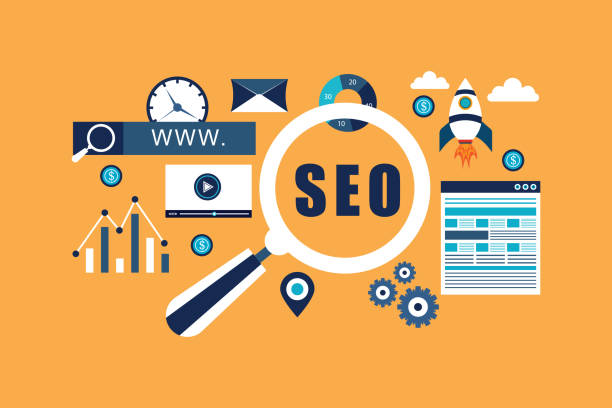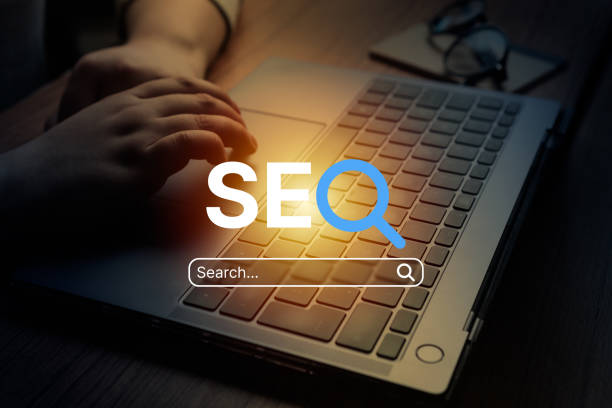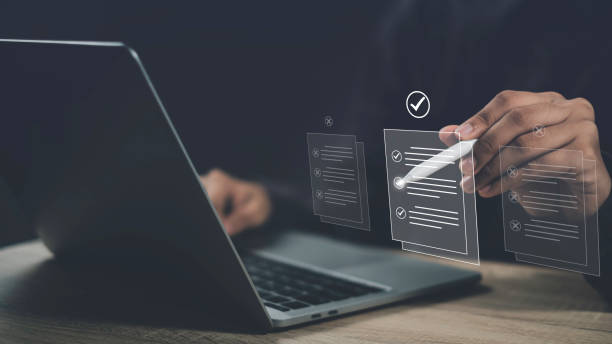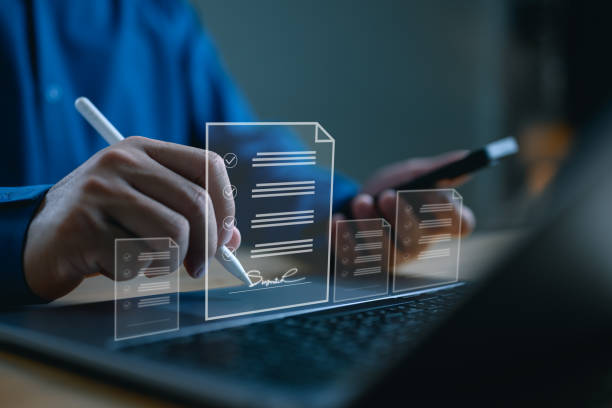What is Internal SEO and Why is it Important?

Internal SEO, also known as On-Page SEO, is a set of actions taken within your website to improve the site’s ranking in search engines like Google.
These actions include content optimization, the use of appropriate keywords, improving the structure of internal links, optimizing images, and many other things.
Why is internal SEO important? Because it helps search engines better understand the content of your site and better identify its relevance to user searches.
By doing Internal SEO correctly, you have a better chance of earning higher rankings in search results and attracting more organic traffic.
Internal SEO increases your site’s conversion rate.
In today’s competitive world, the importance of Internal SEO is felt more than ever.
Without proper optimization, your site will get lost among a sea of websites, missing the opportunity to be seen.
By using internal SEO techniques, you can show search engines that your site is a valuable and relevant resource for users.
Internal SEO helps to improve your site’s ranking and gain more visitors.
Did you know that customers’ first impression of your company is your website? Multiply the credibility of your business with a powerful corporate website from Rasaweb!
✅ Custom and eye-catching design tailored to your brand
✅ Improved user experience and increased customer acquisition
⚡ Get a free consultation!
Target Keyword Research, the Cornerstone of Internal SEO

Keyword research is the first and most important step in Internal SEO.
You need to find the words that users use to search for content related to your business.
For this, you can use various tools such as Ahrefs, Ubersuggest, KeywordTool.io and Google Keyword Planner.
These tools help you find search volume, competition, and related keywords.
After identifying keywords, you should use them strategically in your site’s content.
This includes using keywords in page titles, meta descriptions, body text, and image Alt tags.
But remember that excessive and unnatural use of keywords (Keyword Stuffing) can backfire and cause your site to be penalized by search engines.
In Internal SEO, the appropriate use of keywords helps Google better identify your content.
Optimizing Title and Meta Descriptions

The title and meta description are the first things users see in search results.
Therefore, optimizing them to attract clicks and increase click-through rate (CTR) is very important.
The page title should be attractive, relevant, and include the main keyword.
Try to keep the title under 60 characters so that it is fully displayed in search results.
The meta description should also be a summary of the page content and encourage users to click.
Use relevant keywords in the meta description, but remember that the main goal is to provide an engaging and useful description for users.
Keep the meta description length under 160 characters.
Optimizing the title and meta descriptions is one of the important principles of Internal SEO.
| Feature | Description |
|---|---|
| Title Length | Less than 60 characters |
| Meta Description Length | Less than 160 characters |
| Keywords | Natural and Relevant Use |
Optimizing Page Content

High-quality and relevant content is the heart of Internal SEO.
Your content should be valuable and useful to users and answer their questions.
Use keywords naturally in titles, subheadings, and body text.
Try to present your content in an organized and structured manner so that it is easy for users to read.
Use images, videos, and other multimedia elements to make the content more engaging.
Image optimization is also very important.
Use appropriate Alt tags to describe images so that search engines can understand them.
Reduce the size of images to increase page loading speed.
Internal SEO is meaningless without appropriate and high-quality content.
Are you frustrated with the low conversion rate of your online store?
Rasaweb is your definitive solution with professional e-commerce website design!
✅ Increase your sales and revenue
✅ Unmatched user experience for your customers
⚡ Get a free consultation right now!
Proper URL Structure

The URL structure of your site pages should be simple, clear, and contain relevant keywords.
Avoid using long and complex URLs with too many parameters.
For example, the following URL is better than the other URL:
https://example.com/blog/seo-internal
https://example.com/page?id=123&category=456
Use hyphens (-) to separate words in the URL.
This helps search engines better understand the URL.
Try to keep your URLs short and understandable.
In Internal SEO, an optimized URL helps the user and Google to better understand the page.
Internal Linking

Internal linking means creating links between different pages of your site.
This helps search engines better understand the structure of your site and recognize the relationship between pages.
Internal linking also keeps users on your site longer and viewing more pages.
When internal linking, use appropriate Anchor text.
Anchor text is the text that links to another page.
This text should be relevant to the content of the destination page and contain the main keyword.
Don’t forget to link to relevant and important pages on your site.
Help improve your site’s Internal SEO with internal linking.
Optimizing Page Loading Speed

Page loading speed is one of the important factors in Internal SEO and user experience.
Users who have to wait a long time for a page to load are likely to leave your site.
Google also places great importance on page loading speed, and sites with faster speeds get better rankings.
To improve page loading speed, you can use various methods such as optimizing images, enabling browser caching, using a CDN, and reducing code size.
Google PageSpeed Insights is a useful tool for checking page loading speed and getting suggestions for improvement.
| Factor | Improvement Solution |
|---|---|
| Images | Optimize size and format |
| Code | Reduce code size and compress |
| Browser Cache | Enable browser caching |
Responsive Optimization

Given the increasing use of mobile phones for searching the Internet, responsive optimization is very important for Internal SEO.
Your site should be designed to display correctly on different devices (mobile phone, tablet, computer).
Google gives responsive sites a better ranking.
To check if your site is responsive, you can use the Mobile-Friendly Test tool from Google.
This tool will show you whether your site is suitable for mobile users or not.
Strong Internal SEO is directly related to the responsiveness of the site.
Did you know that 94% of users’ first impressions of a business are related to its website design? With professional corporate website design by **Rasaweb**, turn this first impression into an opportunity for growth.
✅ Attract more customers and increase sales
✅ Create credibility and trust in the eyes of the audience⚡ Get a free website design consultation!
Using Schema Markup

Schema Markup is code that helps search engines better understand your site’s content.
By using Schema Markup, you can provide accurate information about products, services, articles, and other types of content to search engines.
This can cause your site to appear in search results with more information and increase click-through rate (CTR).
To add Schema Markup to your site, you can use the Schema Markup Generator tool.
This tool helps you create the appropriate Schema Markup code for different types of content.
In Internal SEO, using Schema Markup can improve your site’s ranking.
Monitoring and Continuous Improvement

Internal SEO is an ongoing process and requires continuous monitoring and improvement.
You should regularly review your site’s performance and make the necessary changes to improve ranking and organic traffic.
For this, you can use various tools such as Google Search Console and Google Analytics.
Using these tools, you can get information such as the keywords that users use to reach your site, the pages that have the most visits, the bounce rate, and the duration of users’ stay on the site.
By analyzing this information, you can identify the strengths and weaknesses of your site and improve your Internal SEO strategy.
Monitoring and continuous improvement is the key to success in Internal SEO.
Frequently Asked Questions
| Row | Question | Answer |
|---|---|---|
| 1 | What is Internal SEO (On-Page SEO)? | Internal SEO refers to the set of actions that are performed inside the website (on its pages) to improve the site’s ranking in search engine results. This includes optimizing content, site structure, and HTML code. |
| 2 | Why is Internal SEO important? | Internal SEO helps search engines to better understand the content of the page and determine whether that page is relevant and valuable to user searches. This better understanding leads to higher rankings. |
| 3 | What is the first and most important step in Internal SEO? | Keyword Research is the most important initial step. By finding the right keywords, targeted and relevant content can be produced to meet the needs of users. |
| 4 | What is the role of the Title Tag in Internal SEO? | The title tag is one of the most important ranking factors and should include the main keyword. This tag is displayed in search results as the page title and affects click-through rate (CTR). |
| 5 | What is the importance of Meta Description? | The meta description does not directly affect ranking, but by providing an engaging summary of the page content in the search results, it can encourage users to click and thus increase the click-through rate (CTR). |
| 6 | Why is the use of headings (H1, H2, etc.) important in content? | Headings help structure content and improve readability for users and search engine crawlers. Using keywords in headings also helps the search engine better understand the topic. |
| 7 | What does Image Optimization in Internal SEO include? | Includes compressing images to reduce size, using descriptive and related file names, and filling the Alt tag (alternative text) with relevant keywords to help search engines understand the content of the image. |
| 8 | What is meant by Internal Linking in Internal SEO? | Internal linking refers to creating links between different pages of a website. This helps to distribute page equity (Link Equity), improve user experience, and help search engine crawlers discover new pages. |
| 9 | Why is Page Speed important for Internal SEO? | Page loading speed is a direct ranking factor and greatly affects user experience. Slow pages can increase bounce rate and decrease user engagement. |
| 10 | What role does quality content play in Internal SEO? | High-quality, comprehensive, unique, and valuable content for the user is the core of Internal SEO. This content not only attracts and retains users, but also sends positive signals to search engines and helps with better rankings. |
and other services of Rasa Web advertising agency in the field of advertising
Smart Advertising Campaign: A fast and efficient solution for online growth with a focus on intelligent data analysis.
Smart Digital Branding: A combination of creativity and technology to increase website visits by using real data.
Smart Custom Software: A combination of creativity and technology to analyze customer behavior by optimizing key pages.
Smart Social Media: Designed for businesses looking to manage campaigns through precise audience targeting.
Smart Sales Automation: A dedicated service for growing website visits based on attractive user interface design.
and hundreds of other services in the field of internet advertising, advertising consulting and organizational solutions
Internet Advertising | Advertising Strategy | Advertorial
Resources
What is On-Page Optimization? (Moz)
,The Ultimate Guide to On-Page SEO (Search Engine Journal)
,On-Page SEO: The Complete Guide (Ahrefs)
,On-Page SEO: The Complete Checklist for 2023 (Semrush)
? Are you ready to grow your business in the digital world? Rasaweb Afarin, a leading digital marketing agency, will guide you on the path to success by providing comprehensive services including fast website design, SEO, and content marketing strategies. With us, have a powerful presence on the web.
📍 Tehran, Mirdamad Street, next to Central Bank, South Kazerun Alley, Ramin Alley No. 6




